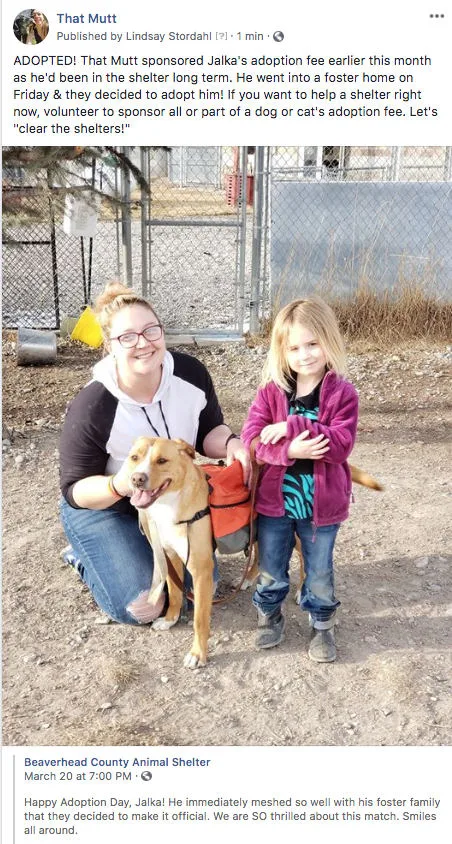Hi, I hope you’re doing OK. Today I’m sharing 10 ideas for how you can help your local animal shelter here in the U.S. during the COVID-10 Pandemic. Last week, I wrote about what dog owners should do in general during the COVID Pandemic.
Each community has different needs and may have different plans for how to best get through this pandemic. Please make sure to ask local shelters and rescue groups directly how you can help vs. making assumptions. These are simply my ideas and opinions as a volunteer and former dog & cat foster home.
10 ways to help an animal shelter during the COVID-19 pandemic
First, let’s state the obvious. Donate. Adopt. Foster if there is a need.
All of these are always important for shelters and rescues. Email or call in advance before showing up to adopt or foster & ask what the current process looks like. For example, our local shelter is offering shelter visits only by appointment and only for those who intend to adopt.
Now, here are 10 additional ideas you may not have considered:

1. Leave stray cats alone.
Most “stray” cats are not lost. They’re simply pets out for a stroll, regardless of whether you personally believe this is OK or not.
Unless the cat is obviously in stress or looks to be starving, I would let the cat be. She will probably find her way home on her own. Shelters are already dealing with a high number of animals right now, and “kitten season” is about to happen in full force. Let’s not overburden them at the moment with adult cats that are probably not even lost.
2. Help an animal shelter by sponsoring a dog’s adoption fee.
A great way to help more animals get adopted faster is to offer to sponsor a dog or cat’s adoption fee. What this means is you pay the typical adoption fee in advance as a donation and then the future adopter gets to take the animal home at no cost. Or, the adopter might still choose to donate, and in that case, even better for the shelter!
That Mutt sponsored the adoption fee of a local dog this month. He went into a foster home last Friday, and within a few hours the foster home decided they would adopt him! Woo hoo! I believe the fact that his adoption fee was already paid for helped the family decide to keep the dog.

Other things you could sponsor:
- A dog or cat’s spay/neuter
- Donate for medical bills of a specific animal in need
3. Simply ask the animal shelter how you can help.
Since every shelter has different needs, the best thing you can do is simply call or email and ask, “How can I help?”
When I lived in Fargo, one of our cat shelters was having a ringworm outbreak. Ringworm is an itchy fungus and not a huge deal, but it’s contagious and obviously bad press for a shelter. I mean, no one wants to deal with a fungus that has “worm” in the name!
I called the shelter and simply asked, “How can I help?” They said, “We desperately need volunteers to help with cleaning!” So I went over and helped clean and sanitize for a few hours. Then I volunteered to foster one of the incoming cats in order to keep him from being exposed. Who remembers Tumbler?!

4. Do not surrender a pet right now if you can help it.
Things happen but if you’re able to hold onto your dog or cat for now, please do. If you know of a friend or family member who needs to surrender their pet for whatever reason, consider taking in the animal for them temporarily or offering to help with training or exercise if you can. Or buying food or whatever it is that can help.
I know things happen and I’m certainly not here to judge. I had to return a dog I planned to adopt earlier this year, thankfully to her breeder vs. a shelter. So I get it. But shelters are facing difficult times right now, so the less animals they have to care for, the better.
5. Volunteer to help with training issues.
On a related note, if you’re a dog trainer or if you’re an experienced dog person in general, you might be able to help the shelter by volunteering to answer some of the training questions that come in.
Some dogs and cats get surrendered to shelters for behavioral problems. These issues could be things like:
- resource guarding
- lunging at other dogs on walks
- cat chasing
- nipping at children
- separation anxiety
- counter surfing and so on.
For cats, the issues are often related to not using the litter box or for scratching.
Sure, sometimes it’s more complicated than this or the owner has already made their decision to surrender the animal, regardless. But sometimes a little help or even just listening to the problem can make a big difference.

Some dogs are really challenging and sometimes people just need to feel supported.
6. Limit in-person volunteering for now – plan to help soon.
Our local shelters are limiting volunteers now, for good reason. This is to prevent the spread of the COVID-19 virus. Only staff and essential volunteers will be working right now at the shelters.
Still, there are other ways you can volunteer. For example, you can volunteer to check references by phone from potential adopters. You can volunteer to send thank you emails to people who adopt animals. There are lots of ways to help. The best thing to do is simply call and ask where there’s a need.
Our local shelters are promoting “Clear the Shelter” on social media, meaning they are doing the best they can to get all their animals into foster homes or adoptive homes as quickly as possible.
In my opinion, this is what shelters should be doing ALL THE TIME but it’s even more important to get animals out of the shelter now. Staff and volunteers are limited and the animals are under even more stress than usual. A shelter is no place for a dog or cat long term. They are almost always better off in a foster home, in my opinion.

8. Only visit the shelter if you plan to adopt.
Our local shelters have rules right now encouraging people to visit the shelter only if they plan to adopt. Of course, this is to protect the shelter staff and other members of the community in addition to keeping yourself healthy.
If you are interested in an animal, you should call the shelter to schedule a virtual “meet and greet” to discuss the animal. Next, you should schedule an appointment to meet the animal in person and complete the adoption. Wait in your car once you arrive and call the shelter to let them know you arrived. When they are ready for you, one family member should go inside to complete the adoption.
9. Help an animal shelter by planning a virtual fundraiser.
Many of the spring fundraising events have been canceled for shelters. For example, St. Patrick’s Day fundraising events were mostly canceled around the country.
To help make up for this, you could plan your own virtual fundraiser for a specific shelter. You can set this up through Facebook and share with friends and family.
10. Keep your own animals safe.
Keep your own dog leashed or under voice control/supervision so he doesn’t wander off during this time. Make sure his ID tags and microchip info are up to date. If your cat goes outside, now would be a good time to put a breakaway collar on him with ID tags!

What would you add to this list?
So those are my ideas! Please add your own ideas in the comments!
If you’ve adopted a dog recently or if you’re fostering, please let me know!
-Lindsay
Related posts:

Aisling
Wednesday 1st of April 2020
The second last photo....the personality differences between Ace and Remy! Ace wondering what the hell did you bring into this house! :)
Lindsay Stordahl
Wednesday 1st of April 2020
Haha! I know, so true!
Sara Kris
Saturday 28th of March 2020
Great article, thanks Lindsay